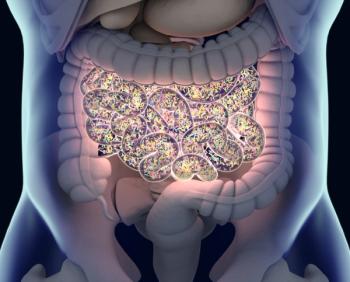
Blood-Based Biomarker Panel Plus Personalized Risk Model Improved Risk Assessment for Lung Cancer Screenings
Investigators reported that combining a blood-based biomarker panel with PLCOm2012 resulted in a significant improvement in risk assessment for lung cancer screenings.
The combination of a blood-based 4-marker protein panel plus a personalized lung cancer risk prediction model (PLCOm2012) significantly improved risk assessment for lung cancer screenings, according to results from a blinded validation study published in the Journal of Clinical Oncology.1
The 4-marker protein panel alone yielded an area under the receiver operating characteristic curve (AUC) 0.79 (95% CI, 0.77-0.82) for case sera collected within 1-year before diagnosis. An AUC of 0.74 (95% CI, 0.72-0.76) was reported across the entire specimen set. With the combination model, the AUC was 0.85 (95% CI, 0.82-0.88) for case sera collected within 1-year prior to diagnosis.
“We recognize that a small percentage of people who are eligible for lung cancer screening through an annual low-dose CT scan are actually getting screening. Moreover, CT screening is not readily available in most countries. So, our goal, for many years, has been to develop a simple blood test that can be used first to determine need for screening and make screening for lung cancer that much more effective. Our study shows for the first time that a blood test could be useful to determine who may benefit from lung cancer screening,” Sam Hanash, MD, PhD, professor of Clinical Cancer Prevention and leader of the McCombs Institute for the Early Detection and Treatment of Cancer, said in a press release.2
A total of 42,450 individuals who have ever smoked were included in the intervention arm. Moreover, 85% of patients included in the intervention arm underwent at least 1 collection. All cases of histologically-confirmed disease within the intervention arm were diagnosed within 6 years of entry on the study (n = 552). Additionally, non-case patients (n = 2193) who were ever smokers were randomized 4:1 with cases.
The mean age for the case population was 65 years, and most were male (64%), non-Hispanic White (88.2%), and former smokers (60%). For the non-case cohort, the mean age was 62 years, and the majority of patients were also male (60%), non-Hispanic White (88.5%), and former smokers (80%).
The PLCOm2012 model was based off a baseline questionnaire with questions that focused on predictive variables such as age, race or ethnic group, education, body mass index, personal history of cancer, family history of lung cancer, intensity, and duration.
Statistically significant improvements in sensitivity and specificity were observed with the 4-marker protein panel plus PLCOm2012 model. Compared with the US Preventive Services Task Force 2013 (USPSTF2013) criteria, the combination model improved sensitivity by 11.9% from 71.6% to 83.5% (95% CI, 7.0%-17.2%) and specificity by 12.9% from 56.4% to 69.3% (95% CI, 10.6%-15.2%).
In the ever smoker intervention arm of 10 or more pack years, the improved performance would have resulted in increased screening referrals for 12.6% more lung cancer cases among the 119 cases who would have otherwise received a lung cancer diagnosis within 1 year, as well as non-referral for 29,6% of 14,061 non-cases. Of 119 patients who were expected to receive a diagnosis within 1 year, 100 would be criteria-positive based on analysis via the combination model.
“The 4-marker protein panel plus PLCOm2012 model yielded superior predictive performance and sensitivity and specificity for ruling individuals into low-dose [CT] screening compared with USPSTF2013 or USPSTF2021 eligibility criteria and with the PLCOm2012 model alone. These findings have important implications for improving lung cancer screening programs and reducing the burden of lung cancer through personalized risk assessment,” the investigators concluded.
References
- Fahrmann JF, Marsh T, Irajizad E, et al. Blood-based biomarker panel for personalized lung cancer risk assessment. J Clin Oncol. Published online January 7, 2022. doi:10.1200/JCO.21.01460
- Blood test helps predict who may benefit from lung cancer screening. News release. MD Anderson Cancer Center. January 7, 2022. Accessed January 10, 2022. https://tinyurl.com/37ycx6s8
Newsletter
Stay up to date on recent advances in the multidisciplinary approach to cancer.






























































































